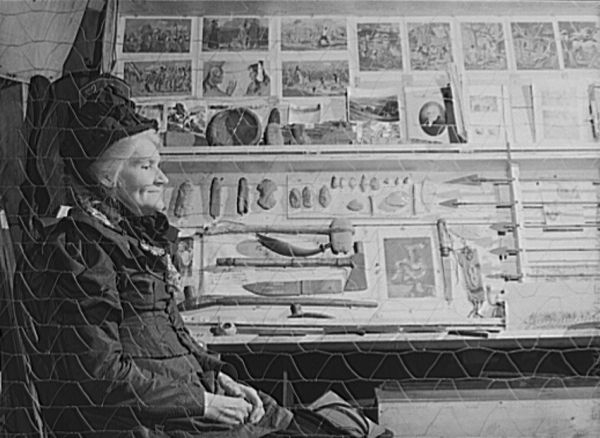 (Host) For many Vermonters the annual Tunbridge Fair, held every year in mid-September, marks the official arrival of fall. This month, as the Tunbridge Fair celebrates its 141st year, commentator and historian Jill Mudgett has been thinking about the fair’s long-standing reputation as a unique Vermont event.
(Host) For many Vermonters the annual Tunbridge Fair, held every year in mid-September, marks the official arrival of fall. This month, as the Tunbridge Fair celebrates its 141st year, commentator and historian Jill Mudgett has been thinking about the fair’s long-standing reputation as a unique Vermont event.
(Mudgett) On a beautiful September day the year that I was 11 or 12, my mother announced that we were going to the Tunbridge Fair. This was back when the Tunbridge Fair was known both as an old-timey country fair and as a rough and tumble display of the more wild side of rural Vermont living. To emphasize the point that we were about to mix with a rare crowd, my mother wore her old, lace-up work boots, the ones that, until then, I’d only seen her wear when she needed to throw the firewood down the cellar bulkhead. She’d certainly never worn those boots to the Champlain Valley Fair!
The Tunbridge World’s Fair has drawn generations of spectators to mingle, to gaze, and to feel for the afternoon that they are taking part in something truly authentic.
In a 1937 newsletter Middlebury College claimed, "There are older, larger, noisier, more splendid Fairs in New England than the Tunbridge outfit, but not one that can touch it for local color…or bucolic odor…" According to the college, a fair like that attracted two groups of fairgoers: "those who come to see the Fair and those who come to see the people who came to see the Fair."
Starting in 1929, part of seeing the people meant strolling through the antique building, where fair organizers had set up displays of local history with costumed re-enactors and old objects collected from townspeople.

When government photographer Jack Delano came to photograph the fair in1941, he took far more photos of people in the crowd than of fair events, concentrating on old-timers engaged in their own solitary acts of spectatorship. Delano had been given a shooting script and a reading list that encouraged him to find resilient Vermonters who were weathered by hard living and socially reserved even among neighbors. So, only a few of his photos, now housed at the Library of Congress, actually depict neighbors making eye contact with neighbors. Delano later recalled that it took some work to get the locals to warm up to him. He also photographed the costumed contra dancers and the re-enactors who were portraying town history on their own terms, and they appear the most relaxed in front of his camera. But even in those photos the locals seem to be part of the antique display itself. Like the elderly female re-enactor seated as part of a display that was closed off behind chicken wire, the fair participants seem less like Delano ‘s contemporaries than historical relics themselves.
The Tunbridge Fair has changed since my first visit, but it’s still considered a stand-out fair in a state full of fairs. I look forward to the usual attractions again this year, including the people-watching. And I’ll no doubt wander through the antique displays, where I’ll once again be reminded of the fact that it’s sometimes easier for a small community to publicly define its shared past than it is to control the ways that visitors will choose to make sense of its present.